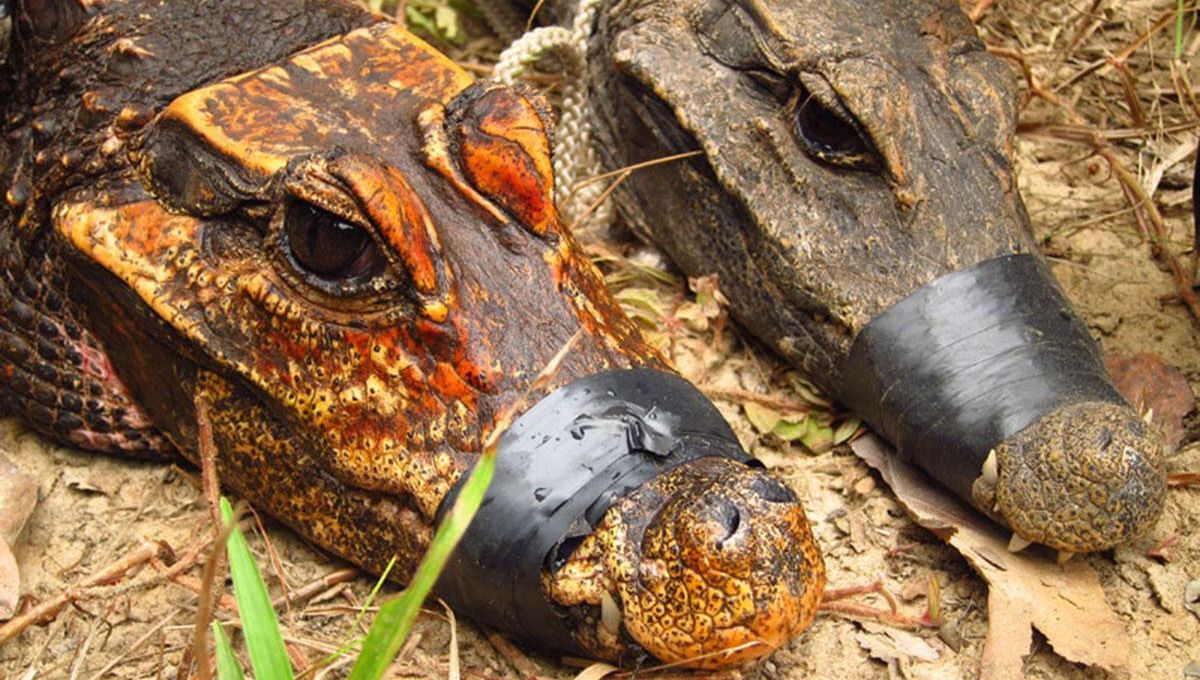
A deeply bizarre group of dwarf crocodiles with fiery orange skin lurk in the caves of Central Africa. Immersed in the environment of Gabon’s Abanda cave system, the crocs have developed several strange adaptations that set them apart from their surface-dwelling counterparts.
Dwarf crocodiles (Osteolaemus tetraspis) are the world’s smallest living species of crocodile, measuring between 1.5 to 1.9 meters (4.9 to 6.2 feet) from snout to tail. Typically, the species lives in the streams and swampy forests of West Africa and Central Africa, but in 2008, biologists found a group thriving within a cave ecosystem for the very first time.
Why are the crocodiles turning orange?
Their most striking feature is their bright orange skin. It’s not entirely clear why they developed this coloration; animals tend to lose pigment in the absence of light, and vibrant orange seems an odd choice for a stealthy predator that hunts in the dark. However, the researchers speculate that the coloration may result from the skin being doused in bat guano. This form of excrement is rich in urea, which could bleach their scales after years and years of exposure.
Since food is relatively scarce down in the caves, the crocodiles have adapted their diet to rely on bats and crickets. Outside crocodiles, on the other hand, enjoy a diet of shrimps, crabs, frogs, and freshwater insects.
“The crocodiles likely either capture bats opportunistically when they fall into the deep guano and mud on the cave floor, or take them directly off the cave walls, where some bats roosted low enough to be captured by a hunting crocodile,” reads a 2016 study on the cave-dwellers.
The unorthodox diet wasn’t doing the crocodiles any harm. The researchers note that the cave population had a higher body mass than those that live in swampy forest environments, suggesting they were eating well. Prey in the cave is comparatively abundant, plus it’s not affected by the seasonal changes seen on the surface.
Life in the caves seems surprisingly easy for the crocodiles. The caverns are humid and warm, perfect for a “cold-blooded” ectotherm, with relatively little variation over the days, weeks, and months. The surface can be wracked by the wet season and hot spells, but the caves are held in a stable, contained state and have no such problem.
Are they evolving into a new species?
The genetic divide between the cave crocodiles and their forest-dwelling relatives is striking. The researchers behind the 2016 study believe that the differences are so marked that, given enough time, it’s possible the cave population could evolve into a distinct, new species.
“Evolution happens on a generational basis. This ‘population’ has accumulated from identifiable genetic differences that in theory could eventually, through a very stepwise process, lead to a new species. If successful, and that is a very big if, this would take a very long time – think thousands of years if not longer,” Dr Matthew Shirley, author of the 2016 study and conservation biologist at Florida International University, told IFLScience.
“They are largely isolated, but there does seem to be gene flow mostly out of the caves, but also very rarely into the caves – which is a homogenizing process that may ultimately prevent speciation. But that doesn’t change the fact that the population is highly ecologically unique and contributing to the evolutionary diversity of the species as a whole,” he added.
Although the team hasn’t been back to the Abanda cave system for another study, Dr Shirley says the cave crocodiles still get the occasional check-in – and they’re still thriving in their shadowy domain.
“There has been no further research as such, at least not in the field, though teams regularly visit the site and confirm the animals are still there [and] are doing well. We are in the process of writing up results from genetic and other analyses we have done previously, but it’s a slow process,” he said.
Source Link: Orange Dwarf Crocodiles Lurk In The Caves Of Central Africa